
We might all be sick of the continuing wet weather but it has provided a great opportunity to see some of the many kinds of fungi found in the Royal. Usually most common in Autumn and Winter, this year fungi have been visible throughout the year and in many different habitats due to the high levels of moisture in the soil.
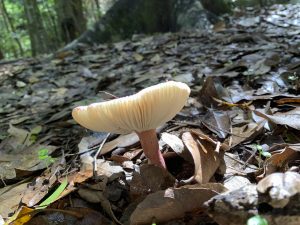
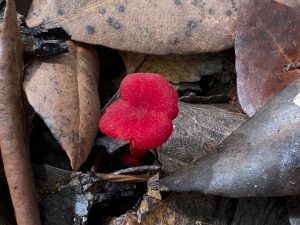
Fungi are amazing organisms. They are neither plant nor animal and belong to their own Kingdom. Unlike plants they cannot make their own food so they form symbiotic relationships with other organisms. They are in fact closer to animals and have chitin, similar to insect shells, rather than cellulose in their cell walls.
Because they are so small and mostly consist of long, microscopic threads known as hyphae, fungi are often overlooked. Scientists are only now discovering the important role fungi play in the environment.
The part that of the fungi that we see as a mushroom growing on the forest floor or coming out of a decaying log is the reproductive structure or fruiting body. The species which have visible fruiting bodies are known as Macrofungi because the majority of fungi so small they are unable to be seen with the naked eye.
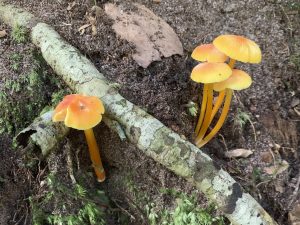
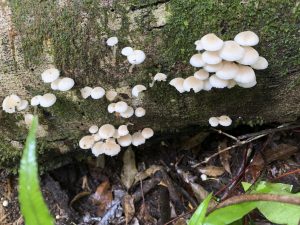
Fungi are the second most diverse group of organisms in the world after arthropods and although we know a great deal about the many types of insects and other arthropods in the environment, fungi are poorly studied. Less than 50% of the fungi found in NSW have been named. It is estimated that there are around 36,000 species of fungi in NSW alone, with around 6,000 being Macrofungi.
Fungi fruiting bodies come in a wide variety of shapes, sizes and colours. Besides the typical mushroom shaped structures, there are the bracket or shell fungi, ones that resemble coral, jelly fungi, puffballs, stinkhorns, truffles and even types of bioluminescent ghost fungus.
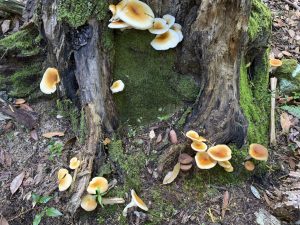
Ghost Fungus
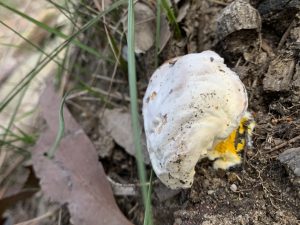
Puffball
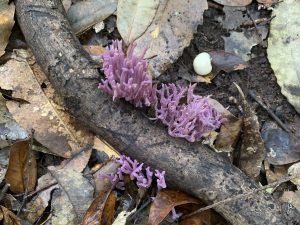
Coral fungus
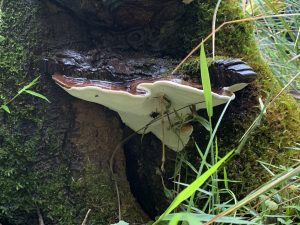
Beef-steak fungus
Fungi can reproduce both sexually and asexually to produce millions of spores which can be dispersed by the wind, water or animal vectors. When they land on a suitable substrate the spores germinate and produce hyphae which under the right conditions, quickly spread. With rain and cooling temperatures they produce fruiting bodies and the cycle begins again.
In the soil, fungi often live in close relationships with plant roots where they help the roots to absorb nutrients and are given sugars by the plant in return. Fungi also play a critical role in decomposition and nutrient recycling in nature. Many genera of Australian plants including Eucalyptus, Acacia and Melaleuca rely heavily on partnerships with fungi to unlock the mineral phosphorus in the soil.
Parasitic fungi such as bracket fungus are involved in hollow formation in trees by rotting out the heartwood and providing homes for a range of birds and arboreal animals.
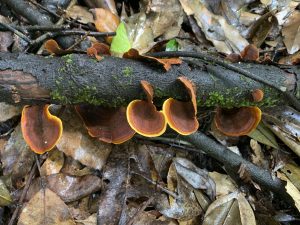
Leather-sunset fungus
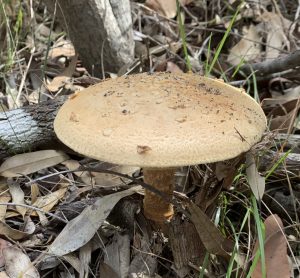
Russula sp
Some of the best places to see fungi in the Royal National Park are in the wet forested areas around the southern end of Lady Carrington Drive, along Bola Creek. The Forest Path and the Wallumarra Track, as it winds along the creek, also contain plenty of opportunities to see a range of fungi. The accompanying photographs have all been taken in this area.
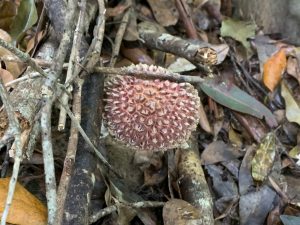
Boletes sp
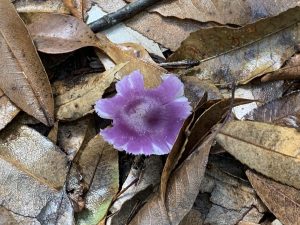
Mauve Waxy-gills
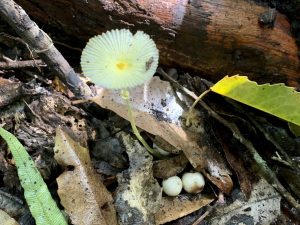
Yellow Parasol
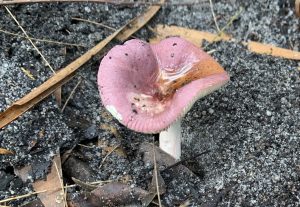
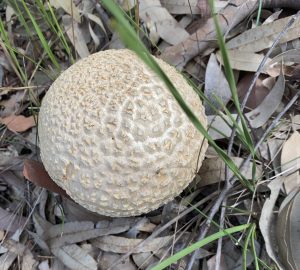
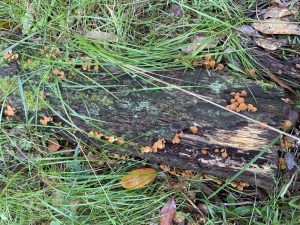
For anyone who wants to know more about our local fungi, the Department of Primary Industries has “A Guide to the Common Fungi of Coastal New South Wales” which has excellent photographs and clear descriptions of the various types. There is also the Sydney Fungal Studies Group which runs field trips for members, including some in Royal National Park during Autumn. The next one at Bola Creek is on Saturday June 3rd 2023. If you would like to join this field trip, register through the Volunteer Calendar on the website.